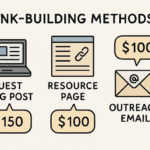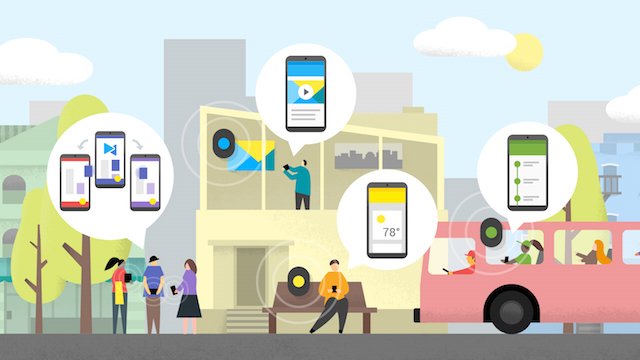In 2025, the mobile app industry continues to evolve at an accelerated pace — but there’s one innovation quietly transforming the way users engage with apps: context-awareness.
From predictive behaviors in health apps to AI-driven personalization in retail platforms, context-aware mobile apps are shaping a smarter, more intuitive digital experience. If you’re part of a mobile app development company in Houston or a startup looking to gain a competitive edge, this is a trend you can’t afford to ignore.
Let’s break down what context-aware apps are, how they work, and why they’re becoming a cornerstone of modern mobile app development.
What Are Context-Aware Mobile Apps?
Context-aware apps are mobile applications that adapt their behavior based on real-time contextual data. This can include a user’s:
- Location
- Activity (e.g., walking, driving, idle)
- Time of day
- Nearby devices
- Environmental factors (like noise or light levels)
Past Interactions and Preferences
In short, these apps don’t just respond to user inputs — they anticipate needs and serve up features or content dynamically.
Think of how Google Maps changes its interface when you start driving, or how fitness apps prompt you to move if you’ve been sedentary for too long. These apps are reading your context and tailoring the experience accordingly.
Why Context Awareness Is a Game-Changer
The traditional model of app interaction relies on users opening the app, tapping through menus, and actively searching for content. Context-aware apps reduce that friction.
They make experiences seamless, smarter, and more proactive. A report by Statista indicates that user retention improves by up to 35% in apps that offer personalized and anticipatory experiences compared to static ones.
This isn’t just a UX improvement — it’s a revenue driver.
Apps that “understand” the user context can:
- Push relevant notifications at the right time
- Reduce steps to complete tasks
- Improve engagement and stickiness
- Enable smarter automation (especially in smart homes and wearables)
For example, a fitness app that knows you just finished a run might automatically prompt you with hydration tips, playlist recommendations, or a stretching routine. No tapping, no searching — just smart suggestions in the right moment.
The Core Technologies behind Context-Awareness
Building a truly context-aware app requires multiple technologies working together:
1. Sensor Integration
Smartphones are packed with sensors: GPS, accelerometers, gyroscopes, ambient light sensors, and more. These provide the raw data about movement, orientation, and environment.
2. Machine Learning
Raw sensor data is noisy and complex. ML algorithms help process that data and identify patterns — for example, detecting when a user is commuting vs. walking the dog.
3. Cloud Services & APIs
Location APIs, weather data, traffic updates, and even IoT device integrations all feed into the app’s understanding of context.
4. Natural Language Processing (NLP)
Voice assistants and chatbots use NLP to interpret not just what a user says but when and how they say it, considering timing and tone.
5. Edge Computing
To reduce latency and improve responsiveness, many modern apps process contextual data directly on-device. That’s where companies offering iOS app development company services have an advantage — Apple’s Core Motion and Core ML frameworks are optimized for on-device intelligence.
Real-World Applications of Context-Aware Apps
Let’s explore how different industries are leveraging context-aware mobile applications:
Healthcare & Fitness
Apps like Samsung Health or Fitbit use context awareness to monitor physical activity, sleep cycles, and stress levels — adjusting notifications and goals dynamically.
A new wave of mental health apps are now context-sensitive too, sending breathing or meditation prompts when stress indicators are high, based on phone usage patterns or noise levels.
Retail & E-commerce
Retail apps can change their UI and offer dynamic promotions based on a user’s location (in-store vs. remote), time of day, or even weather.
Starbucks, for instance, can ping you with a coffee deal when it’s raining and you’re passing by a store.
Transportation & Navigation
Apps like Waze adapt based on real-time traffic, user habits, and frequent destinations — not just showing you a map, but predicting where you’re likely heading.
Smart Homes & IoT
Apps tied to smart home ecosystems (like Google Home or SmartThings) use presence detection and time triggers to automate lights, temperature, or appliances.
UX and Design Considerations for Context-Aware Apps
Designing a context-aware app is as much a design challenge as it is a technical one. Here’s what product teams should focus on:
Subtlety Is Key
Users shouldn’t feel like they’re being watched or manipulated. The app’s context-sensitive behavior must feel intuitive and helpful — not invasive or creepy.
Give Users Control
Let users opt in or out of contextual features. Provide transparency about how and when data is used.
Prioritize Battery Efficiency
Heavy sensor usage can drain power fast. Efficient coding, selective polling, and edge computing can help mitigate that.
Test Across Real-World Scenarios
Unlike traditional apps, context-aware apps behave differently based on the environment. Testing should involve diverse real-life situations — crowded areas, different times, user habits, etc.
Privacy Concerns and Responsible Data Use
Context-aware apps rely heavily on collecting and analyzing user data — which means data privacy and transparency are non-negotiable.
In a post-GDPR world (and with Apple and Google tightening data access), developers must:
- Clearly state what contextual data is collected and why
- Use on-device processing wherever possible
- Minimize the amount of personal data sent to the cloud
- Encrypt all sensitive data
- Implement easy-to-use permissions and privacy settings
Building user trust is a long game. One breach or unclear practice can ruin the user experience — and your reputation.
Why Startups Should Prioritize Context-Awareness from Day One
For early-stage startups, building a context-aware app from the beginning offers a competitive edge that’s hard to replicate later. Most startups focus heavily on MVPs — often cutting personalization or adaptive features due to time or budget constraints. But that’s a missed opportunity.
By integrating even basic context-aware features early (like location-based prompts or time-aware push notifications), startups can drastically improve engagement and retention from day one.
It’s also easier to architect scalable, privacy-first data models if you consider context-awareness at the foundation stage — rather than bolting it on after product-market fit. Plus, modern SDKs from Apple, Google, and third-party platforms make it feasible even for lean teams.
Startups that treat context not as a bonus but as core UX strategy will build smarter, stickier apps — and stand out in a crowded market fast.
Opportunities for App Developers and Businesses
If you’re a mobile app development company in Houston, now is the perfect time to start building context-aware capabilities into your client apps — especially for businesses that rely on customer experience, personalization, or automation.
Here’s why the opportunity is ripe:
- The hardware (sensors, edge chips, connectivity) is now standard even in mid-range devices.
- Frameworks and SDKs for Android and iOS make sensor data more accessible.
- Users now expect smarter, more adaptive apps.
Whether it’s a real estate app that tailors listings based on location and budget, or a ride-hailing app that adjusts UI for drivers vs. passengers, context-awareness adds real value with minimal friction.
Future of Context-Aware Mobile Apps
Looking ahead, we can expect context-aware apps to become:
- Even more autonomous — using generative AI and predictive modeling to perform full tasks on a user’s behalf
- More cross-platform and cross-device — syncing context between phones, wearables, home devices, and cars
- Emotionally intelligent — recognizing emotional context through voice tone, facial cues, or behavioral signals
Context-awareness is not just a feature anymore — it’s becoming a baseline expectation for premium user experiences.
Final Thoughts
Mobile apps are no longer just passive tools waiting for user interaction. They’re becoming active assistants, powered by context, capable of delivering the right information at the right moment without the user asking.
This is a powerful shift — one that requires app developers, designers, and businesses to rethink how they approach personalization, UX, and app intelligence.
As more businesses look to stand out in crowded app markets, context-aware capabilities could be the differentiator that turns a one-time user into a loyal customer.
If you’re looking to build an app that goes beyond the basics, don’t just ask what it should do — ask what it should know.
Because the apps that win in 2025 and beyond won’t just respond to clicks. They’ll respond to life.
READ ALSO: How Small Businesses Can Make Informed Payroll and HR Software Decisions



















